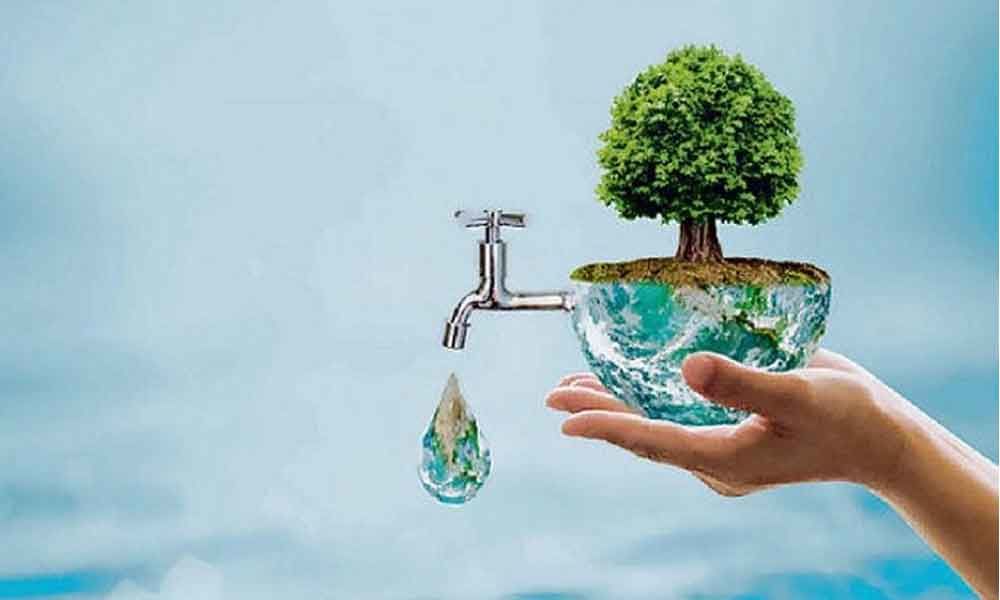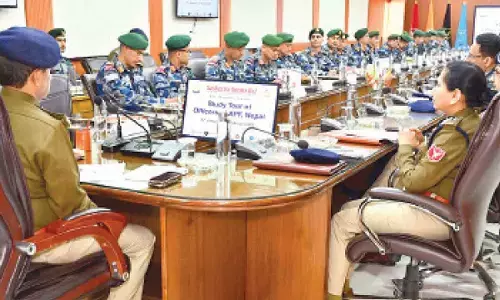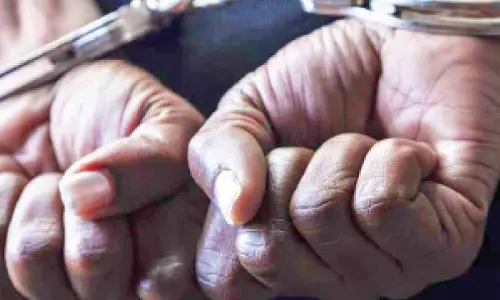Jal Jeevan Mission: A social revolution through water

Jal Jeevan Mission: A social revolution through water
In a short span of one year, 3.04 crore households have been provided piped water connections as against 3.23 crore households since Independence. Goa has emerged as the first state to achieve 100 per cent coverage under JJM and as on date, 52 dis-tricts, 660 blocks, 39,317 gram panchayats and 73,890 villages have achieved the targets of "Har Ghar Jal"
Encouraged by the promising results of Jal Jeevan Mission for rural households, Government of India, in the Budget 2021, made a historic announcement of launch-ing Jal Jeevan Mission (Urban) to provide potable piped water supply to 2.68 crore urban households spread over 4,378 Urban Local Bodies with an outlay of Rs 2.87 lakh crore over a period of five years. The far-reaching benefits of this mission can-not be practically estimated
I grew up in a small village in Haryana. Coming from a poor Dalit family, poverty and exclusion were the only flavour of life. My parent's daily schedule hinged around securing 2 course meal for their family. My father worked as a shoe maker while my mother toiled hard as a wage labourer.
I remember her ordeal, walking tire-lessly up to the designated well, each day, just to fetch drinking water. Her resolve to secure drinking water for her children gave her the grit to brave all physical and so-cial hardships she faced in this process.
Later in life, I was fortunate enough to witness piped water connections in our vil-lage, but this time the caste-class matrix dictated the esteemed beneficiaries. The poor and marginalised were again devoid of their basic right to clean drinking water. Years passed by and by 2019, we as a nation, could provide piped water supply to a mere 3.23 crore rural households out of a total 18.93 crore rural households.
But, it was after 72 years of Independence -2019 that from the precincts of Red fort, our Prime Minister Narendra Modi announced his resolve to provide piped water connections to every rural household under governments flagship program "Jal Jeevan Mission".
Present at the Red fort at that historic moment ,my past flashed in front of my eyes. I remembered how late Atal Bihari Vajpayee ji, during his visit to my village for performing kanyadaan of my sister, described piped water connection as a conduit to dignity of life for each household.
That moment, I considered myself fortunate to be serving in the newly formed Jal Shakti Ministry and saw "Jal Jeevan Mission" was a God sent opportunity. The entire team, led under the dynamic leadership of our Prime Minister is working tirelessly till date to accomplish this unprecedented task.
I proudly announce that in a short span of one year, 3.04 crore households have been provided piped water connections as against 3.23 crore households since Independ-ence. Goa has emerged as the first state to achieve 100 per cent coverage under JJM and as on date, 52 Districts, 660 Blocks, 39,317 Gram Panchayats and 73890 villages have achieved the targets of "Har Ghar Jal".
Encouraged by the promising results of Jal Jeevan Mission for rural households, Government of India, in the Budget 2021, made a historic announcement of launch-ing Jal Jeevan Mission (Urban) to provide potable piped water supply to 2.68 crore urban households spread over 4,378 Urban Local Bodies with an outlay of Rs 2.87 lakh crore over a period of five years. The far-reaching benefits of this mission can-not be practically estimated.
However, there is something more significant that's happening as an implication of this Mission. A water connection is being provided to one and all irrespective of caste, community, religion, race etc. with an approach that - " No one is left behind". Priority has been placed on villages with majority SC/ST population with the aim to secure 55 lpcd of water per capita.
This secular and inclusive approach is primarily benefiting the people from backward castes and is proving to be a social revolution.
The Mission mandates provisioning of water supply infrastructure at an unprecedent-ed scale. It requires skilled manpower like plumbers, masons, electricians, fitters, pump operators etc. which shall be met by skilling people from respective villages therefore, opening vistas for skilled employment in-situ.
The entire Mission follows a bottom up approach. It requires formation of Village water Supply committees/Pani Samitis that shall prepare a village action plan for themselves. Interestingly, these committees mandated to have 50 per cent women members since women are most affected group, therefore their say is seen as a crucial input for its effective implementation.
Lastly, Information Technology has been leveraged to collate and display realtime na-tionwide water data on a Portal www.ejalshakti.gov.in. A Rashtriya Jal Jeevan Kosh (RJJK) is set up for accepting contributions from people who have moved from vil-lages but still nurture love for their native place.
Soon, they will be able to donate, at the click of the mouse, for specific water supply related works by interacting with the members of Paani Samiti through this portal.
Hence, Jal Jeevan Mission is not merely a scheme whose outcome is limited to ag-gregate of connections provided, rather its ushering a social revolution marked by people's participation, empowerment, convergence, inclusion and equity.
(The author is Union Minister of State for Jal Shakti/Social Justice and Empowerment)

















